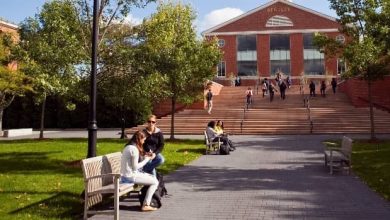How much do Community College Professors make ?

The average pay for a community college instructor is $70,080, according to the Bureau of Labor Statistics. This remuneration applies to all junior colleges owned by the local government, the state government, and the private sector. Local government-owned institutions pay the most of this group, with an annual mean wage of $79,750. With a mean wage of $55,070, state government-owned institutions pay the least.
Outlook
Community college instructors are expected to see a 15% increase in employment from 2016 to 2026, according to the Bureau of Labor Statistics. This rate of growth is higher than the anticipated average rate of growth for all occupations.
More people will pursue training and education in those regions and specializations with the highest demand for work when job availability varies in different sectors of the economy. This will increase the need for more professors in these fields.
Community college professors describe a more gratifying experience as a result of their close contact with students and a greater emphasis on education rather than research and publication of papers and books. While a community college professor’s salary may be lower than that of a comparable teacher at a four-year institution, the tenure track at a two-year college is often shorter.
Read more:How much does a Gynecologist make ?
Professors at Community Colleges: Who Are They?
Community college professors are members of a two-year junior college or trade school’s academic staff. They are typically in charge of preparing students for their associate degree or other similar credential.
These professors are viewed as instructors who are responsible for devising lesson plans, educating students, and grading papers. They also help students who want to go to university or get a career right after they finish their schooling.
How to Become a Professor at a Community College
Getting a job as a community college professor is similar to getting a job in any other postgraduate school.
This does, however, imply that you have a particular degree of education and professional experience. Although the processes may differ depending on where you are, let’s have a look at the most frequent one.
Pursue a Bachelor’s Degree
The first step for students who want to become community college instructors is to obtain a bachelor’s degree. The student should have a bachelor’s degree in a subject related to the community college course they wish to teach.
A student interested in becoming a physics professor at a community college, for example, must major in physics or a physics-related course.
This helps aspiring Community College lecturers prepare for the task they have chosen. Any aspirant to be a community college professor must have a bachelor’s degree. The average length of time it takes to complete this program is four years.
Pursue a Master’s Degree
Several people are aware or aware that being a professor necessitates more than a master’s degree. This is a common tendency that is largely found in four-year or university programs.
If you want to be a community college lecturer, however, a master’s degree is considered sufficient.
Students interested in becoming professors should pursue a master’s degree in the subject area they plan to teach. A student who aspires to be a physics professor, for example, will need a master’s degree in physics with a focus on community college teaching.
This will allow the aspiring professor to teach physics both on campus and online in the future.
The Master’s Degree program takes approximately two years to complete and is a prerequisite for becoming a community college professor.
Learn to Teach
Many community colleges require its lecturers to have prior expertise in the field before being hired. You are expected to have hands-on experience in courses such as health care before you can teach this subject.
Furthermore, some credentials may be required in order to work at a community college.
Some community colleges, for example, will require you to earn your CPA (certified public accountant) qualification before teaching accounting.
Experience and accreditation are two terms that aid in the development of a better College Professor.
Begin your teaching career at a community college.
You can’t always go straight from high school to community college professor. It usually suggests that you will be taking part-time classes, as many schools employ part-time instructors.
After working as a part-time teacher for a while, you can apply to become a full-time teacher, which will prepare you to teach at a community college.
What are the responsibilities of a Community College Professor?
A professor who teaches at a community college is known as a community college professor. Community colleges, sometimes known as junior colleges, city colleges, or technical colleges, are post-secondary institutions that specialize in lower-level post-secondary education. Most community colleges also include programs that allow students who did not complete high school to earn high school diplomas, allowing them to continue their education. Because community colleges are not focused on research, a community college professor’s primary concentration is on course development and instruction.
Professors at community colleges typically have a heavier teaching load than those at universities and colleges that give higher degrees. The community college professor’s only concentration is usually on teaching, resulting in more work with students and less time for private intellectual endeavors. The absence of graduate students, who typically work as teaching assistants at other institutions of higher learning, is another factor that contributes to the increase in workload. A community college professor, on the other hand, will normally be responsible for marking his class’s homework, papers, and tests on his own.
A community college professor faces distinct problems and opportunities due to the large number of students who pass through. Professors are frequently required to teach multiple classes during the week and must be able to work with a diverse student population. Because getting into community college is usually not difficult, educators must be able to teach students at various academic levels. Some community college instructors find their jobs extremely rewarding because of the significant impact they have on their students’ lives. Other teachers, on the other hand, choose to teach just advanced students.
A community college professor’s salary may be slightly lower than that of a four-year college professor, and certain community institutions may have weaker hiring standards. This is due to the fact that the emphasis is usually solely on teaching.
At community colleges, there are several prospects for growth, and some academics will eventually find themselves in administrative positions. A community college professor’s compensation tends to rise over time, and community college teachers are often known for their excellent teaching. Some community college instructors can advance to tenure, but not all colleges provide this opportunity.
The Best Community Colleges in the U.S.
Walla Walla Community College is a community college in Walla Walla, Washington.
Walla Walla Community College offers courses in Academic Transfer Education, Professional/Technical Education, Transitional Studies, and Extended Learning to over 13,000 new, returning, and international students each year.
Academic courses at WWCC (100 level or higher) are generally transferrable to most four–year schools. Students can acquire an Associate’s degree wholly online or through a combination of online and on–campus courses through WWCC’s e–learning program. Running Start is a program that allows high school juniors and seniors to enroll in Walla Walla Community College courses.
In addition to traditional areas of study, Walla Walla CC serves as a hub for technical and community learning, hosting the Ag Center of Excellence, which provides agricultural education; College Cellars of Walla Walla, which provides educational opportunities in the field of enology and viticulture, including an operating winery; Learning Center for Nonprofits, which provides resources, training, and education to current and prospective nonprofit staff and board members; and Water and Environment, which provides environmental education.
Walla Walla Community College was selected a co–winner of the Aspen Institute’s prestigious Aspen Prize for Community College Excellence in 2013. The junior college was also named a 2011 Finalist with Distinction for the same award by the Aspen Institute.
Santa Barbara City College is a community college in Santa Barbara, California.
The 104–year–old Santa Barbara City College (SBCC) is situated on a campus with breathtaking seaside views in Santa Barbara, California. The junior college serves Santa Barbara County’s south coast.
With an average class size of 28, the community college offers more than 50 certificate programs and 80 degrees. SBCC has a total enrollment of 20,000 students, with over 7,500 of them enrolled full–time.
SBCC’s full–time students transfer to four–year colleges in 57 percent of cases, with more than half earning a bachelor’s degree. SBCC credits are guaranteed to transfer to 76 colleges (in and out of California), and other schools guarantee admission provided a student passes academic requirements. The Transfer Achievement Program (TAP) at the college assists students in making educated decisions about their plans to transfer from SBCC to a four-year university.
SBCC’s Express–to–Success program employs small learning communities to help students navigate first–year remedial courses, resulting in a considerable increase in course completion.
The college boasts a diverse student body and serves a large number of traditionally underserved students, including an increasing number of Hispanics. Hispanic students, who make up more than a third of the student body, have a remarkable three-year graduation/transfer rate of 48 percent.
Santa Barbara City College was selected a co–winner of the Aspen Institute’s prestigious Aspen Prize for Community College Excellence in 2013. The college was also named a 2011 Finalist for the same award by the Aspen Institute. In 2012, Santa Barbara City College was placed #23 on CNNMoney’s list of community colleges.
Lake Area Technical Institute is a technical institute in the Lake Area.
The first technical school in South Dakota was Lake Area Technical Institute (LATI), which is located in Watertown, South Dakota. The campus covers an area of 18,000 square miles.
There are 29 study programs and 11 E–degrees available at Lake Area Tech. More than 1,700 full–time, part–time, and online students attend the junior college. The school has a cheap tuition rate and a graduate placement rate of 99 percent.
Agri–Business, Custom Paint & Fabrication Cosmetology, Robotics, Aviation Maintenance, and Nursing are just a few of the school’s programs.
Lake Area Technical Institute has the highest graduation percentage in the country and assists its alumni in obtaining high-paying jobs.
Within three years, 76 percent of first–time, full–time LATI students graduate or transfer to a four–year institution, compared to 40 percent nationally.
LATI graduates recently earned 40% more than other new recruits in the area on average.
LATI graduates from a certain program may transfer LATI technical credits to a specific degree plan at South Dakota State University through program–to–program articulation agreements. A combination of general education and technical credits may be employed.
Military Institute of New Mexico
The New Mexico Military Institute (NMMI), in Roswell, New Mexico, is the United States’ sole state–supported, co–educational military boarding school. NMMI has a four–year college preparatory high school as well as a two–year junior college.
New Mexico Military Institute is one of only six military junior colleges in the United States, and its organization and architecture are based on Virginia Military Institute. The complex is 40 acres in size, and includes an 18-hole golf course.
NMMI students are known as cadets and the institution has an average of 975 cadets, with 95 percent of them going on to four–year universities. Cadets represent nearly every state in the United States as well as a dozen foreign countries at any given moment.
The New Mexico Military Institute’s Corps of Cadets has its own command structure, reporting to the Commandant of Cadets and his staff. All cadets are expected to follow the honor code and uphold the highest standards of personal integrity. No cadet will Lie, Cheat, or Steal, or Tolerate Those Who Do, according to the honor code. Cadets are expected to uphold and defend the honor code.
More than a third of college students are interested in joining the Army. The school commissions roughly 35 cadets as US Army 2nd Lieutenants each year through a two–year Early Commissioning Program (ECP).
The liberal arts curriculum of New Mexico Military Institute is comprehensive. Sixty–eight hours of coursework are required for an Associate in Arts degree. While obtaining an Associate of Arts degree, a cadet may opt to specialize in one field.
Related Post:How to become a Professor: Requirements and Salary









